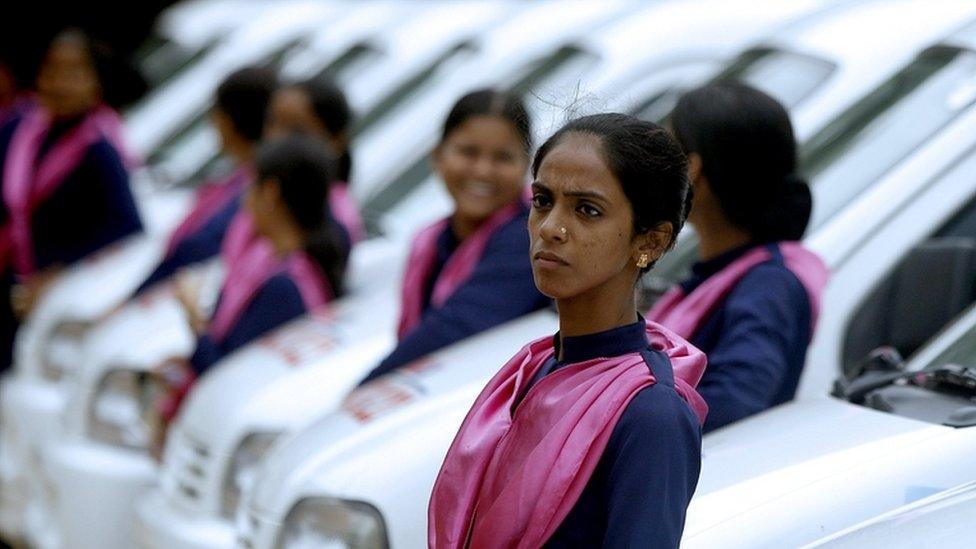India Witnesses Rise in Female Workforce Participation, Reaches 42% in 2023–24 – Newsonair

Report on India’s Progress in Female Labour Force Participation and Alignment with Sustainable Development Goals
Key Findings and Growth Trajectory
A report from the Labour and Employment Ministry indicates a substantial increase in India’s Female Labour Force Participation Rate (FLFPR). This rate has surged from 23% in the 2017-18 period to approximately 42% in 2023-24. This progress is a critical step towards achieving several Sustainable Development Goals (SDGs).
- According to World Bank data, this increase is the most significant recorded among the BRICS nations over the past decade.
- This upward trend signifies a major transformation in women’s economic inclusion, directly supporting the national vision of a developed India (‘Viksit Bharat’) by 2047.
Advancing SDG 5: Gender Equality
The rise in female workforce participation is a primary indicator of India’s commitment to SDG 5, which aims to achieve gender equality and empower all women and girls. Government initiatives have been central to this achievement.
- Eliminating Barriers to Participation: Women-centric policies for government service, such as the exemption of fees for competitive examinations, directly address economic barriers, promoting equal opportunity.
- Supporting Work-Life Balance: The provision of 730 days for Child Care Leave and 180 days for maternity leave acknowledges and supports the dual roles of women as professionals and caregivers, a key component of SDG target 5.4.
- Combating Violence Against Women: The establishment of One Stop Centres provides integrated support services, including medical, legal, and psychological aid, for women facing violence. This contributes to SDG target 5.2 by creating a safer environment for women to live and work.
Driving SDG 8: Decent Work and Economic Growth
The integration of women into the formal economy is a powerful driver for sustainable economic growth, directly aligning with the objectives of SDG 8. Targeted policy initiatives have focused on creating opportunities for decent work for all.
- Skills for Employment: Numerous skill development initiatives have been launched across government ministries to equip women with market-relevant skills, supporting SDG target 8.5 for full and productive employment.
- Access to Economic Resources: Policies designed to expand women’s access to credit and formal employment are fundamental to their economic empowerment and contribution to national growth.
Broader Contributions to the 2030 Agenda
The empowerment of women in the workforce has a cascading effect, contributing to a wider range of Sustainable Development Goals.
- SDG 1 (No Poverty): The economic independence of women is a critical factor in lifting families and communities out of poverty.
- SDG 4 (Quality Education): The emphasis on skill development programs promotes lifelong learning opportunities and enhances vocational training for women.
- SDG 10 (Reduced Inequalities): Closing the gender gap in labour participation is a direct measure to reduce economic and social inequalities within the country.
Analysis of SDGs in the Provided Article
-
Which SDGs are addressed or connected to the issues highlighted in the article?
The article primarily addresses issues related to three Sustainable Development Goals (SDGs):
- SDG 5: Gender Equality: This is the central theme of the article. It focuses on achieving gender equality and empowering all women and girls by discussing the increase in female workforce participation, government initiatives for women’s welfare, and support systems for women facing violence.
- SDG 8: Decent Work and Economic Growth: The article directly connects to this goal by highlighting the promotion of sustained, inclusive, and sustainable economic growth, full and productive employment, and decent work for all. The increase in the female labour force participation rate from 23% to 42% is a key indicator of progress in this area.
- SDG 4: Quality Education: This goal is relevant due to the mention of skill development initiatives. The article states that the government has launched programs to enhance women’s participation in the workforce by “equipping them with market-relevant skills,” which aligns with the goal of ensuring inclusive and equitable quality education and promoting lifelong learning opportunities.
-
What specific targets under those SDGs can be identified based on the article’s content?
Based on the article’s content, the following specific targets can be identified:
- Target 5.2: Eliminate all forms of violence against all women and girls in the public and private spheres. The article mentions the establishment of “One Stop Centres” that provide “comprehensive support to women facing violence, offering medical assistance, legal aid, psychological counselling, and shelter services,” which is a direct policy action towards achieving this target.
- Target 5.5: Ensure women’s full and effective participation and equal opportunities for leadership at all levels of decision-making in political, economic and public life. The core subject of the article—the “remarkable increase in the female workforce participation rate”—is a fundamental aspect of ensuring women’s full participation in economic life.
- Target 8.5: By 2030, achieve full and productive employment and decent work for all women and men… and equal pay for work of equal value. The article’s focus on increasing the “female labour force participation rate” and promoting “inclusivity in the workplace” through targeted policies directly contributes to this target of achieving full and productive employment for women.
- Target 4.4: By 2030, substantially increase the number of youth and adults who have relevant skills, including technical and vocational skills, for employment, decent jobs and entrepreneurship. This target is addressed by the statement that “skill development initiatives have also been launched by the government… equipping them with market-relevant skills.”
-
Are there any indicators mentioned or implied in the article that can be used to measure progress towards the identified targets?
Yes, the article mentions and implies several indicators:
- Female Labour Force Participation Rate (Explicitly Mentioned): The article provides precise data: “the female labour force participation rate has increased from 23 per cent in 2017-18 to around 42 per cent in 2023-24.” This is a direct quantitative indicator used to measure progress towards Target 8.5 (full employment) and Target 5.5 (women’s participation in economic life).
- Number and Scope of Support Services for Women (Implied): The mention of “One Stop Centres” implies an indicator related to Target 5.2. Progress could be measured by the number of such centers established, the range of services they offer (medical, legal, counseling), and the number of women they assist.
- Implementation of Women-Centric Policies (Implied): The article lists several policy initiatives like “730 days Child Care Leave,” “180 days maternity leave,” and “Posting of husband and wife at the same station.” The existence and uptake of these policies serve as qualitative and quantitative indicators of a supportive work environment, contributing to Target 8.5 and Target 5.5.
- Enrollment in Skill Development Programs (Implied): The reference to “skill development initiatives” for women implies that progress towards Target 4.4 can be measured by the number of women enrolled in and completing these programs, and their subsequent employment rates.
-
Create a table with three columns titled ‘SDGs, Targets and Indicators” to present the findings from analyzing the article.
SDGs Targets Indicators (Mentioned or Implied in the Article) SDG 5: Gender Equality 5.2: Eliminate violence against women.
5.5: Ensure women’s full participation in economic life.– Establishment and functioning of “One Stop Centres” for women facing violence (Implied).
– Female labour force participation rate (Explicitly mentioned as increasing from 23% to 42%).SDG 8: Decent Work and Economic Growth 8.5: Achieve full and productive employment and decent work for all women and men. – Female labour force participation rate (Explicitly mentioned).
– Implementation of women-centric workplace policies like extended maternity and child care leave (Implied).SDG 4: Quality Education 4.4: Increase the number of adults with relevant skills for employment. – Launch and enrollment in government-led skill development initiatives for women (Implied).
Source: newsonair.gov.in

What is Your Reaction?
 Like
0
Like
0
 Dislike
0
Dislike
0
 Love
0
Love
0
 Funny
0
Funny
0
 Angry
0
Angry
0
 Sad
0
Sad
0
 Wow
0
Wow
0




















































.jpg.webp?itok=0ZsAnae9#)


























